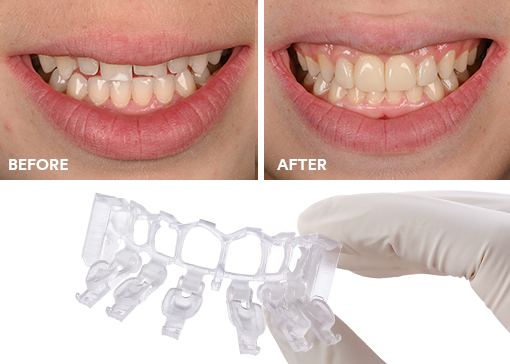Zirconia puzzle: what makes zirconia unique and how to choose the right zirconia
Zirconia may be part of your everyday vocabulary, but how much do you know about this ceramic material? Learn more…


In the recipe for restorative success, you need the right ingredients – and that means monomers that work together to reduce stress. Learn more about these special molecules and what your choice could mean for your restoration.
How do you choose your composite? Probably for a variety of reasons, including the location of the restoration, the needs of the procedure, and the physical, mechanical and esthetic properties you expect from the material. But with so many composites available, each with their own unique features, strengths and weaknesses, it’s easy to get overwhelmed. The truth of the matter is that composites are the result of complex chemistry, and the final product is heavily dependent on every individual ingredient – as well as how they combine and interact. And knowing your composite means more than just the brand name, it means knowing the full recipe.
While often taken for granted, dental monomers are the building blocks of every restoration you place. And just like choosing the right materials to build a wall, knowing which monomers, in which combinations, are in your composite will make a big difference to the final outcome – and are worth paying attention to.
Though there are many different formulations out there, dental composites generally consist of a few key ingredients: a resin matrix, fillers, coupling agents, polymerization initiators, stabilizers and pigments all blended together in different combinations to produce a specific outcome.1 But where do monomers come in? On their own, monomers are like individual bricks but when combined, they build the first ingredient on many recipes: the resin matrix.
Monomers are a specific kind of small molecule capable of bonding together when exposed to light, heat or pressure to form more complex molecules, called polymers – which are found in just about every material in our daily lives as well as many dental products. In dental composites, these polymers form a cross-linked, three-dimensional network called the resin matrix, which can then be reinforced with other ingredients like fillers. The resin matrix not only provides the structural backbone for the restoration, but is vital to the physical, mechanical and optical properties of the material.2

While there are many different monomers out there, the most common choices for commercial dental composites are bisphenol A glycidyl dimethacrylate (BisGMA), its ethoxylated version (BisEMA), triethylene glycol dimethacrylate (TEGDMA), and urethane dimethacrylate (UDMA). These dental acrylic monomers are usually used in different combinations in different ratios to make use of their individual benefits – and account for any shortcomings.
BisGMA was first incorporated into dental composites in 1962 and continues to be the most commonly used monomer in dentistry today.3 Its high molecular weight and low double bond content provides low polymerization shrinkage, high reactivity, low toxicity and fast setting – and is known for producing strong and stiff polymetric networks.2-6 , 8
However, its high viscosity not only creates handling issues but also decreases filler compatibility and the degree of conversion – which can negatively impact a number of physical properties, including wear and shrinkage. For this reason, BisGMA is often combined with other, lower viscosity monomers (such as TEGMA) to improve handling and physical properties.6, 8
A highly flexible, low-molecular weight, low-viscosity dental monomer, TEGDMA is often used as a diluent for other more viscous monomers to improve handling, as well as increase filler content and copolymerization. Unfortunately, TEGDMA is not without its drawbacks, in that it results in high water sorption, lower mechanical properties and low color stability.2, 3, 5-7, 9
BisEMA is actually a slightly altered version of BisGMA, which features a high molecular weight and stiffness but a lower viscosity, which enables a higher degree of conversion, low polymerization shrinkage, low water sorption and improved mechanical properties. For these reasons, it’s frequently used as an alternative to TEGDMA in composite compositions.2, 3, 5, 6, 9
UDMA was developed to overcome the limitations of BisGMA by presenting a monomer with a high molecular weight but a low viscosity, along with high flexibility and toughness. In practice, formulations based on UDMA have higher flexural strength, elastic modulus and hardness as well as improved monomer conversion when compared to those made with BisGMA.2, 4, 6, 7, 9
However, it’s not without its drawbacks. UDMA features a higher viscosity than TEGDMA and BisEMA, which can limit handling and filler compatibility. And its refractive index is lower than both BisGMA and BisEMA, which can reduce its optical match with common radiopaque filler systems.10
However, not every composite uses these same dental monomers in the same combinations and with so many other options available, it can be difficult to know exactly what you’re using – and whether or not you’re seeing all benefits you’ve been promised. You can think of it as using differently sized stones of different materials to build a wall – without the proper reinforcement, they’re unlikely to produce a consistent, strong structure.

Polymerization shrinkage is an intrinsic and unavoidable part of using resin composites, but it can cause a lot of problems. Depending on the monomers used, it can cause stresses in the material or on the tooth, which in turn can create issues like microleakage, staining and even fracture.11 And unfortunately, many existing formulations still result in excessive shrinkage and stress.
Thankfully for dental professionals and their patients, dental monomer and polymer technology is evolving. Some manufacturers are utilizing new, innovative monomers to address polymerization stress issues.12, 13 For example, the addition fragmentation monomer (AFM) and aromatic urethane dimethacrylate (AUDMA), featured in some leading composites, were specifically developed to take the pressure off – without compromising wear resistance.13
Unlike traditional dental monomers, AFM features a third reactive site that fragments and repositions during polymerization, relaxing the developing network. These fragments then re-polymerize in a lower stress state, providing relief without compromising physical properties.13
AUDMA features a higher molecular weight than traditional dimethacrylates, which limits the number of shrinkage zones in the resin. This not only reduces volumetric shrinkage, but controls the stiffness of the developing and final polymer matrix – both of which contribute to shrinkage stress.13


Choosing the right composite can be a challenge, particularly when there are so many different compositions out there focusing on different ingredients, features and benefits. But the resin system shouldn’t be overlooked, and neither should the polymers and monomers that make it up.
While it can be tempting and reassuring to stick with legacy resin systems due to their clinical history, these technologies still have their original drawbacks – and a lot has changed since their inception in the 1950s. By exploring new dental monomer and polymer technologies, you not only open your practice up to a whole new set of benefits but could overcome historically complicated challenges – and take the stress off.
Sources

Zirconia may be part of your everyday vocabulary, but how much do you know about this ceramic material? Learn more…

Achieving the correct shape is vital to a natural-looking anterior composite restoration. Learn how the 3M™ Filtek™ Matrix, paired with…

Direct composite restorative procedures can be challenging, particularly when it comes to esthetic cases. Discover how new techniques and tools…